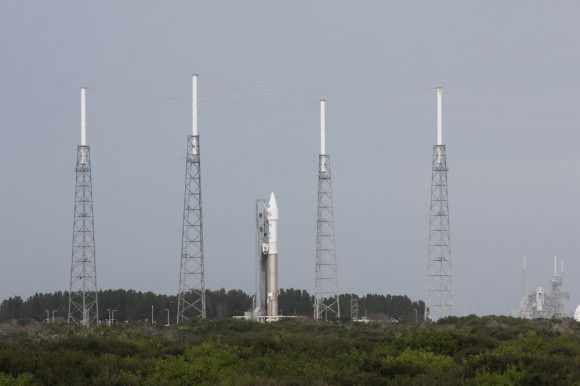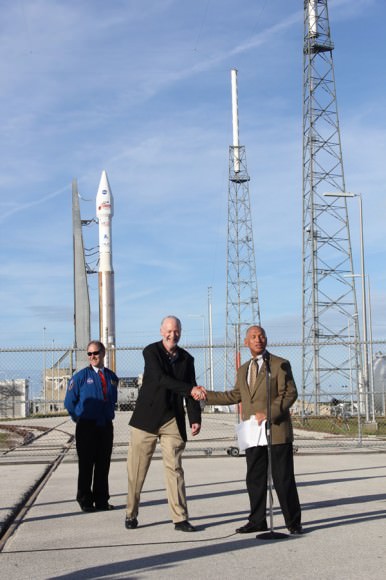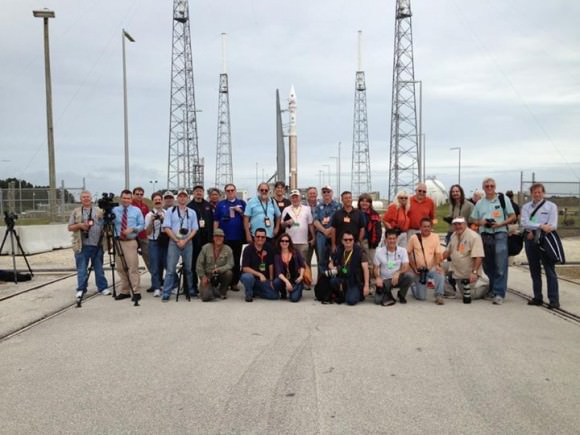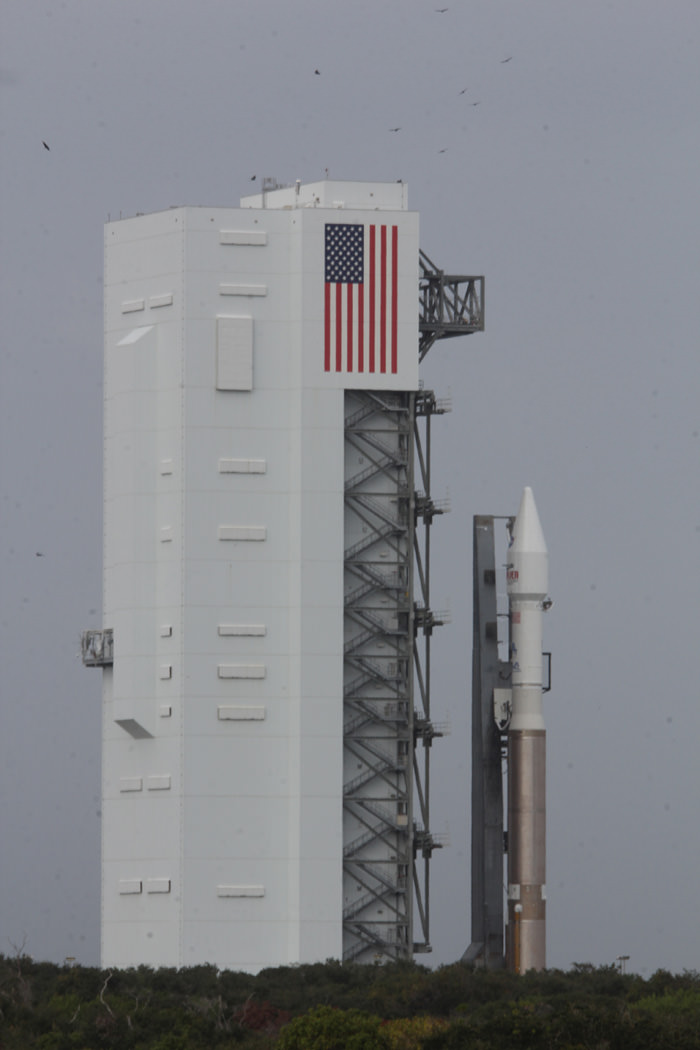NASA’s Mars bound MAVEN spacecraft atop Atlas V booster rolls out to Launch Complex 41 at Cape Canaveral Air Force Station on Nov. 16, 2013. Credit: Ken Kremer/kenkremer.com
Story updated[/caption]
KENNEDY SPACE CENTER, FL – NASA’s Mars bound MAVEN spacecraft was rolled out to the seaside launch pad on Saturday Nov. 16 on Florida’s space coast on an expedition to study the Red Planet’s atmosphere and its potential for astrobiology.
All systems are “GO” for MAVEN and the powerful Atlas booster that will set the probe streaking on a ten month interplanetary journey to the Red Planet.
MAVEN is targeted to launch Monday, Nov. 18 at 1:28 p.m. EST atop a United Launch Alliance Atlas V 401 rocket from Cape Canaveral Air Force Station in Florida.

The battery is being charged. After a day of rest for the launch pad crew, the countdown is set to resume at about 6:28 a.m. on Monday.
The Atlas launch window extends for 2 hours until about 3:30 p.m.
The weather outlook is somewhat iffy with a 60% chance of favorable conditions at launch time. The main threats are rain, winds and clouds.
Crowds of spectators are descending on Florida to view the historic launch and the local hotels are filling up. And I’ve spoken to many enthusiastic folks and kids hoping to witness a space spectacular.
Mars beckons humans for centuries as a place of myths and mysteries.

“MAVEN is an astrobiology mission,” said Bruce Jakosky, MAVEN’s Principal Investigator from the University of Colorado at Boulder, at NASA’s Kennedy Space Center.
Mars was once wet billions of years ago, but no longer. Now it’s a cold arid world, not exactly hospitable to life.
“We want to determine what were the drivers of that change?” said Jakosky. “What is the history of Martian habitability, climate change and the potential for life?”
NASA’s MAVEN Mars orbiter – which stands for Mars Atmosphere and Volatile Evolution – is the first real attempt to investigating these fundamental questions that hold the key to solving the Martian mysteries perplexing the science community.
The 5,400 pound MAVEN probe carries nine sensors in three instrument suites.
The Particles and Fields Package, provided by the University of California at Berkeley with support from CU/LASP and NASA’s Goddard Space Flight Center in Greenbelt, Md., contains six instruments to characterize the solar wind and the ionosphere of Mars. The Remote Sensing Package, built by CU/LASP, will determine global characteristics of the upper atmosphere and ionosphere. The Neutral Gas and Ion Mass Spectrometer, built by Goddard, will measure the composition of Mars’ upper atmosphere.
You can watch the launch live on NASA TV.

Stay tuned here for continuing MAVEN and MOM news and Ken’s MAVEN launch reports from on site at the Kennedy Space Center press site.
Ken Kremer
…………….
Learn more about MAVEN, MOM, Mars rovers, Orion and more at Ken’s upcoming presentations
Nov 15-20: “MAVEN Mars Launch and Curiosity Explores Mars, Orion and NASA’s Future”, Kennedy Space Center Quality Inn, Titusville, FL, 8 PM
Dec 11: “Curiosity, MAVEN and the Search for Life on Mars”, “LADEE & Antares ISS Launches from Virginia”, Rittenhouse Astronomical Society, Franklin Institute, Phila, PA, 8 PM


Well it didn’t roll out to the launch pad on the 19th if it’s going to launch on the 18th. BTW…What time is liftoff Dr. Kremer? Come on, I expect better than this!
Check the dates in the article.
Go MAVEN! The more we learn about Mars the better.
Nije realno o?ekivati pozitivne rezultate ove misije. Triton je manji od Marsa pa nije izgubio atmosferu. Materija se privla?i i nije jasno koje ?injenice idu suprotnom u prilog. Uvidom u broj kratera na Marsu vidljivo je da tim putem pove?ava svoju masu. Ako misija nema neki skriveni zadatak ova potraga je promašena.